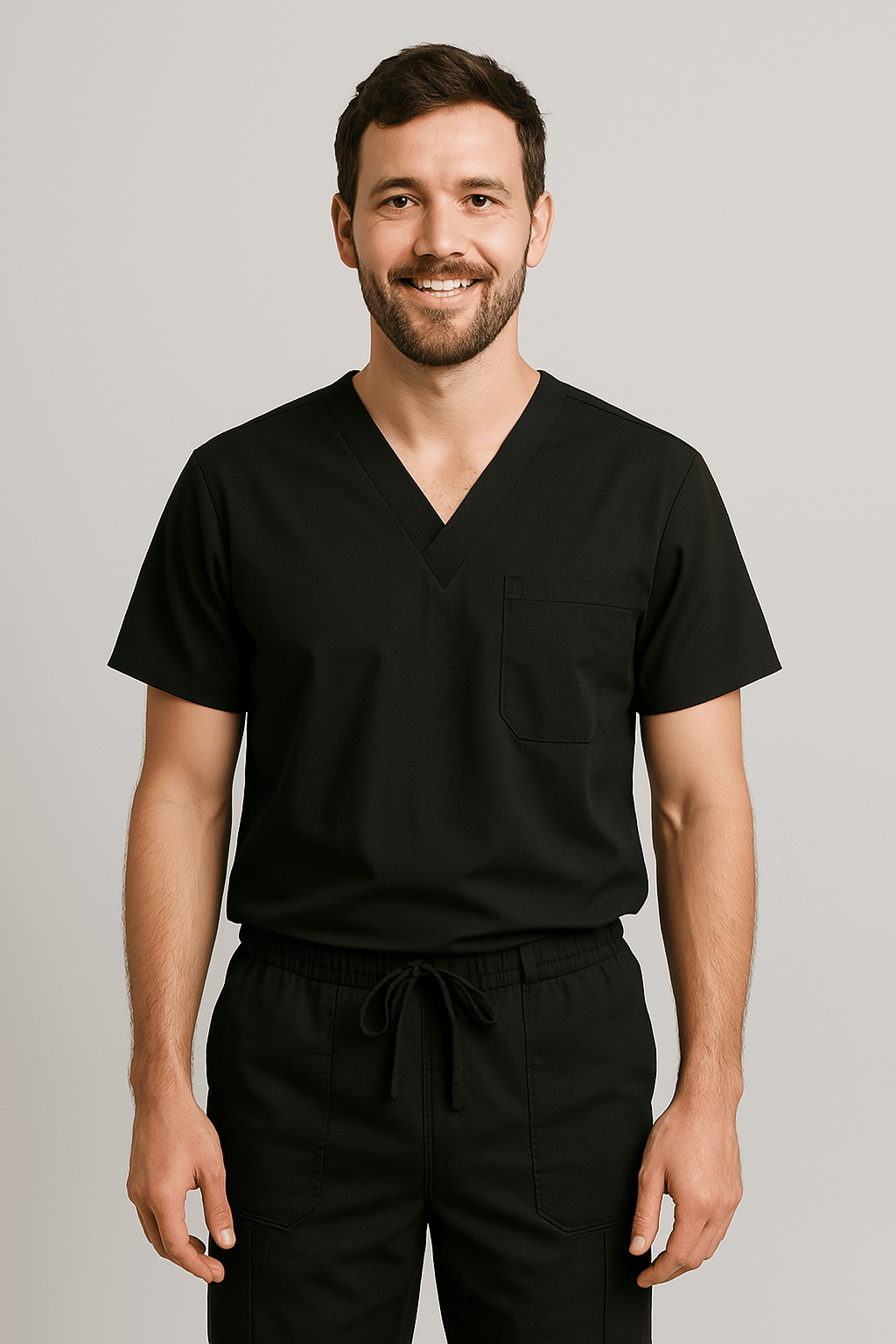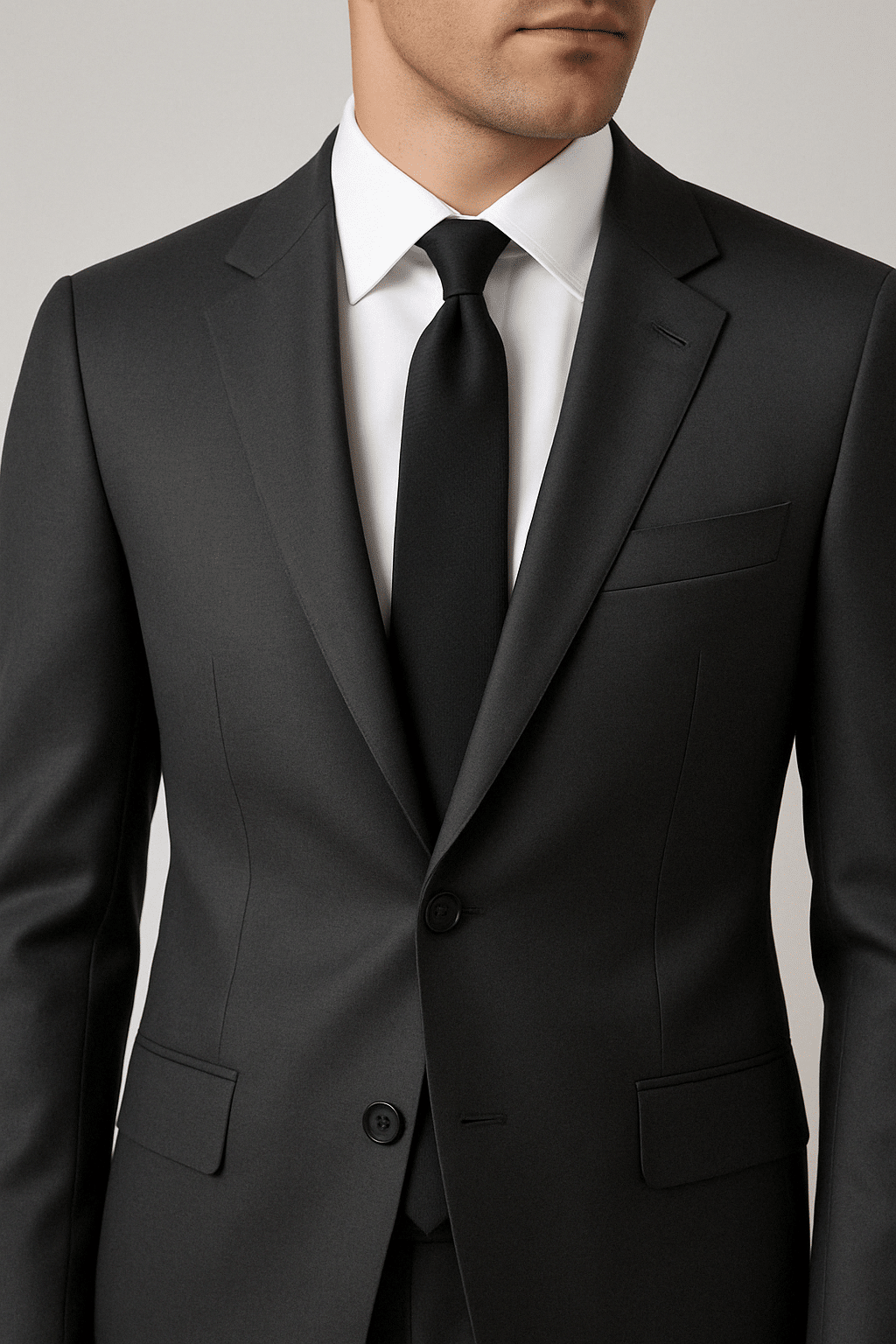Introduction – Restaurant Uniform Design
The global uniform and workwear industry is valued at US $67.92 billion in 2025, with an expected annual growth of 4.30 %. Uniforms are powerful branding tools, especially in hospitality. A Core Uniform–referenced study found that 72 % of diners judge a restaurant’s professionalism based on employee uniforms. In the UAE’s competitive dining scene, well‑designed uniforms reinforce brand identity, build team unity and improve customer experience.
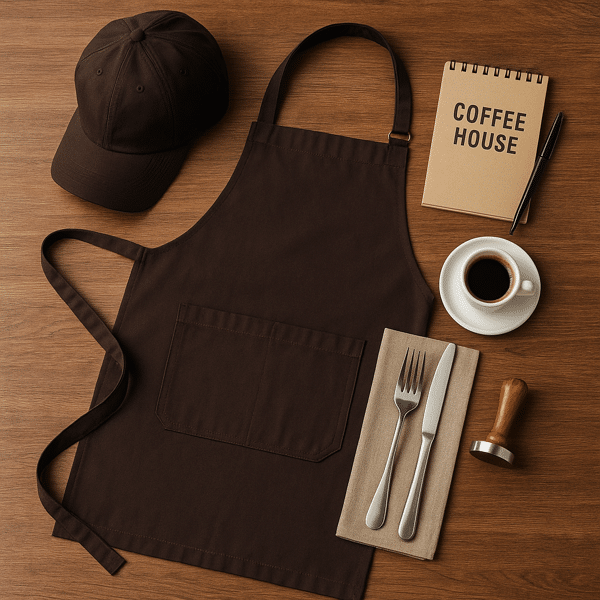
The Role of Uniforms in Restaurants
Brand Identity and Customer Experience
Uniforms convey a restaurant’s personality at a glance. Coordinated colours, fabrics and logos tie the look to your interior design, signalling professionalism and consistency. In fine dining, fitted jackets or waistcoats create an elegant atmosphere; casual cafes might choose polos or coffee house uniforms. Since most diners notice uniforms and connect them to perceived quality, aligning attire with your brand enhances the dining experience.
Read our guide: The top Restaurant Uniform Designs
Professionalism, Comfort and Functionality
Great uniforms balance style with practicality. Staff need to lift trays, stand for long hours and handle food, so fabrics must be breathable and moisture‑wicking. Cotton blends work for servers; tougher polycotton suits chefs. Simple combinations—slacks or skirts, button‑down shirts, and aprons—allow freedom of movement and quick cleaning. Accessories like waist aprons with pockets support efficiency. Uniforms should also be durable enough to withstand frequent washing and maintain their shape and colour.
Safety and Hygiene Standards
Uniforms also protect staff. Chefs require long sleeves and heat‑resistant fabrics to prevent burns. Non‑slip shoes reduce fall risks. Grooming rules—clean shoes, neat hair—complement uniform policies. Materials that resist stains and wash well maintain hygiene, and antimicrobial fabrics help control odours. Uniform guidelines should emphasise both appearance and safety to reassure diners about cleanliness.
Restaurant Uniform design
Selecting Materials, Colours and Fit
Choose fabrics that suit your climate and concept. In the UAE’s heat, lightweight and breathable materials keep employees comfortable. Neutral colours like black, white and grey convey elegance, while earthy tones fit casual settings. Fit should be tailored but not restrictive, and uniform stitching should withstand frequent laundering. Investing in durable materials reduces replacement costs. For high‑end establishments, consider premium fabrics with a bit of stretch for ease of movement. In cooler months or air‑conditioned spaces, layering options such as vests or cardigans allow staff to adapt without changing the overall look.
Read our guide: Uniform Stitching
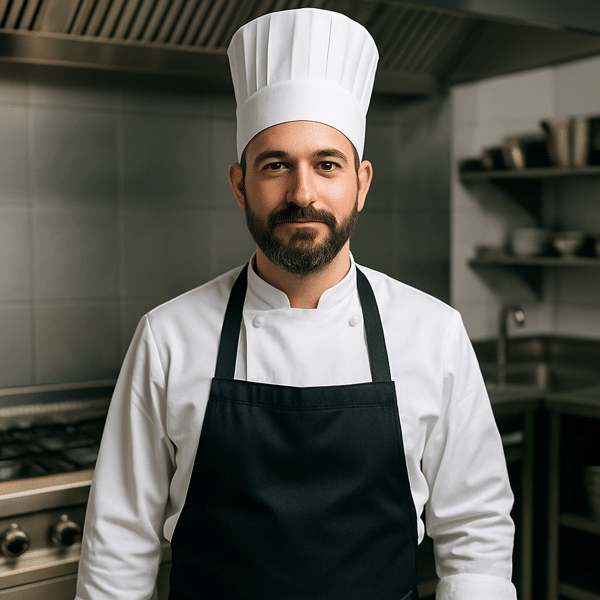
Uniform Types for Different Roles
Different roles demand different features. Restaurant uniform designs typically include trousers or skirts, breathable shirts and functional aprons. Fine‑dining waiters may add ties or waistcoats; casual venues often choose branded T‑shirts or polos. Barista uniforms favour lightweight shirts and sturdy aprons that protect against spills. Restaurant chef uniforms prioritise protection with long sleeves and double‑breasted fronts. A coherent colour scheme across roles helps customers identify staff while maintaining a unified look.
Read our guide: The role of Restaurant Chef Uniforms
Tailoring and Personalisation
Quality tailoring enhances both appearance and durability. Reinforced seams and double stitching prevent tears. Personalisation—embroidery with names or logos, coloured trims distinguishing roles—builds brand identity and staff pride. When selecting a supplier, look for custom tailoring and printing options that meet your design and branding needs. A uniform that fits well not only looks professional but also reduces the risk of accidents caused by loose or ill‑fitting garments.
Read our guide: How To Start Embroidery
Uniform Suppliers and Sourcing in Dubai
Partnering with a uniform supplier in Dubai provides access to materials and expertise tailored to the local climate. Local manufacturers can offer custom designs with faster turnaround and quality control. Evaluate potential partners on fabric quality, stitching durability, sustainability and the ability to produce specialised garments like barista aprons or chef jackets. Ethical sourcing—ensuring fair labour practices and environmentally friendly fabrics—aligns your business with modern consumer values. Suppliers who understand regional preferences can also help you incorporate modesty considerations and climate‑resilient materials. Working with a uniform manufacturer in Dubai also allows you to visit production facilities, ensure quality standards, and discuss design tweaks in person, which is invaluable when creating a distinctive look.
Read our guide: Custom Uniforms – What To Think About
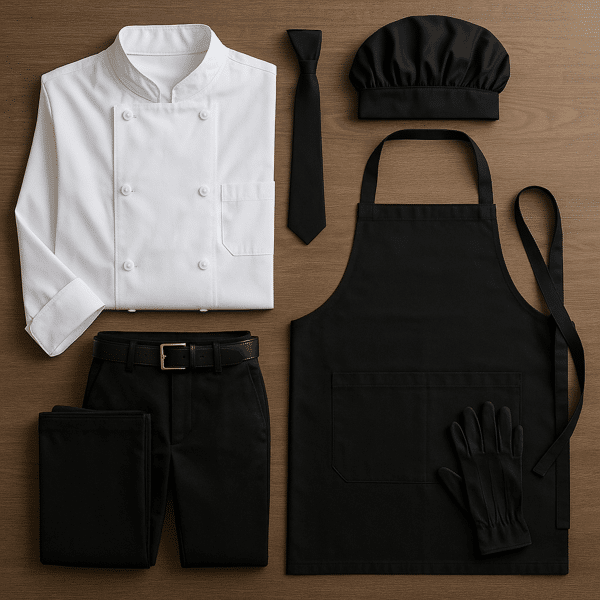
Trends and Innovations in Restaurant Uniform Design
Modern Aesthetics and Guest Engagement
Uniform design trends are moving toward minimalist styles and unique colour palettes. Upscale restaurants favour sleek jackets and dark trousers, while contemporary cafés opt for pastel shirts and denim aprons. Differentiating roles through subtle accents, such as varied trims or signature accessories, engages guests without losing cohesion. Allowing modest personal expression—like adjustable aprons or tasteful jewellery—helps staff feel comfortable and authentic. Photogenic uniforms also serve as marketing tools when guests share their dining experiences online.
Sustainability and Ethical Sourcing
Growth in the uniform market comes with increased emphasis on sustainability. Choosing eco‑friendly fabrics such as organic cotton or recycled polyester reduces environmental impact. Durable materials that survive frequent washing prolong the lifespan of uniforms. Supporting local manufacturers minimizes shipping emissions and ensures ethical working conditions. Restaurants can also implement repair and recycling programs to extend garment life, aligning business operations with sustainability goals. Demonstrating commitment to sustainable uniforms can enhance brand reputation among environmentally conscious diners.
Summary – Restaurant Uniform Design
Restaurant uniforms are more than dress codes; they shape first impressions and influence brand perception. With the global uniform industry valued at US $67.92 billion and diners acutely aware of staff appearance, investing in thoughtful uniform design is essential. Effective uniforms combine style with comfort: breathable fabrics, tailored fits, and functional accessories. They differentiate roles—servers, baristas, chefs—while maintaining a cohesive look. Quality tailoring and personalisation reinforce brand identity, and sourcing from local manufacturers in Dubai ensures climate‑appropriate materials and ethical practices. Trends point to minimalist aesthetics, unique colour palettes and sustainable materials. By following these guidelines, restaurants can enhance customer experience, support staff performance and strengthen their brand.
